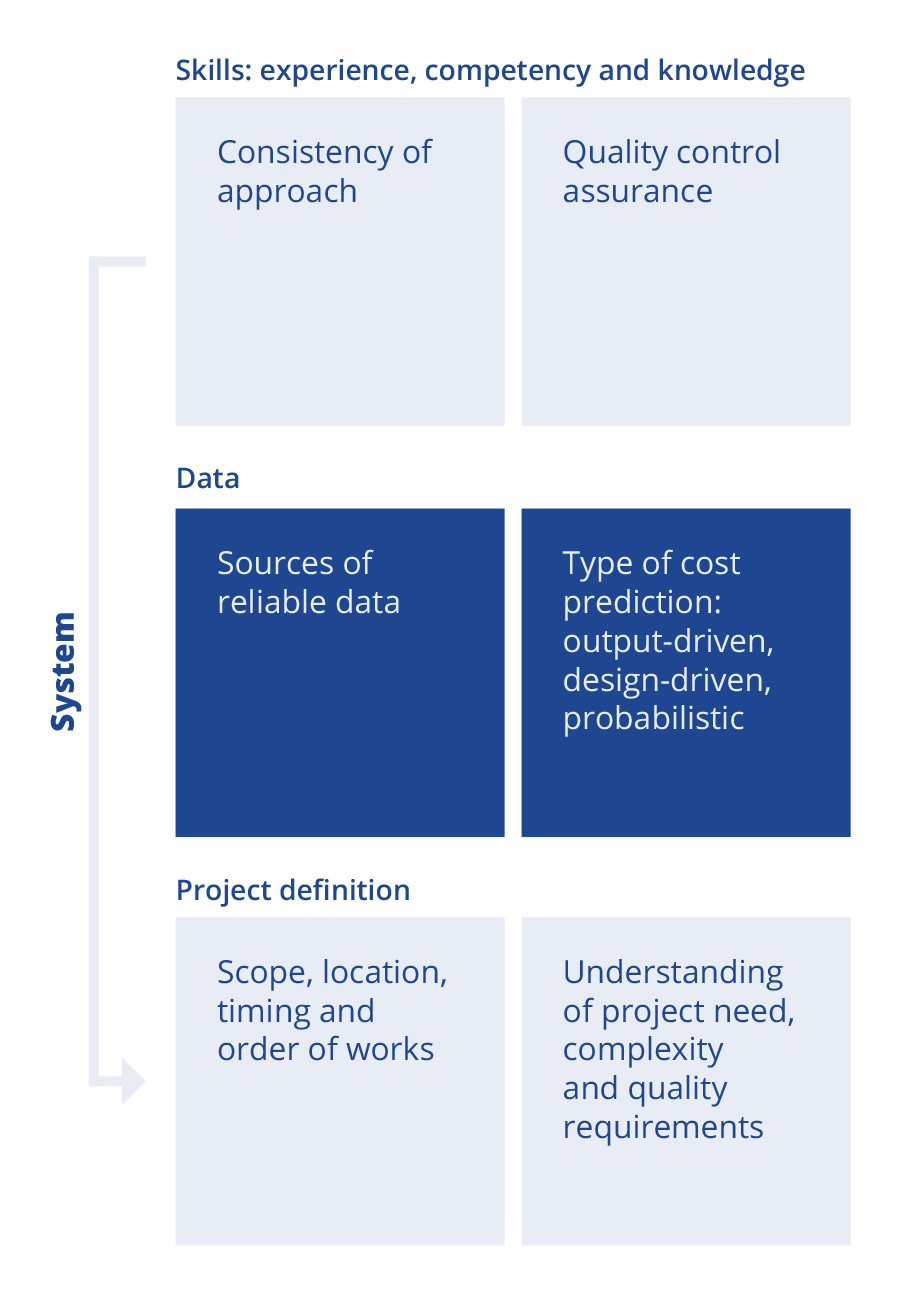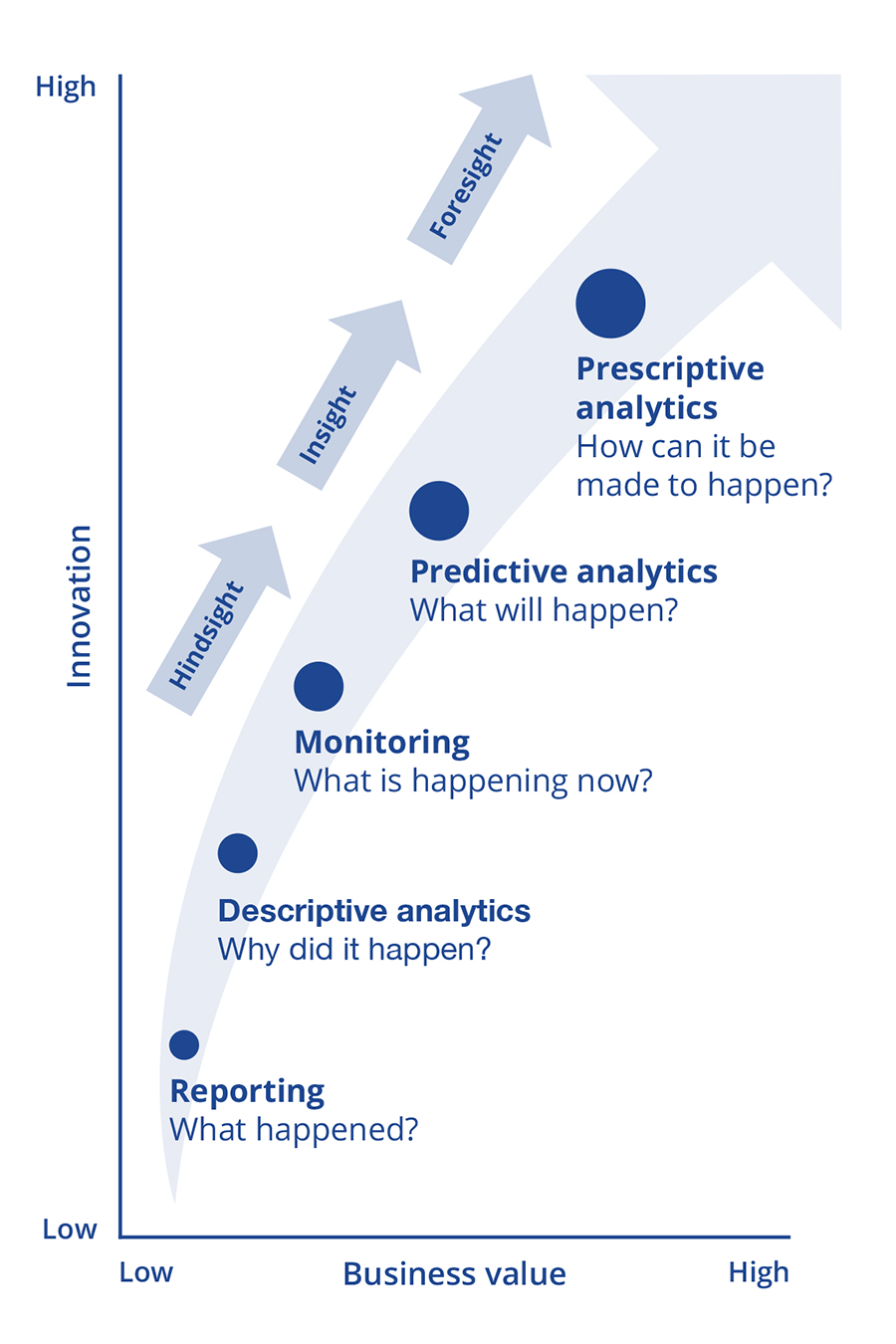%20EDITORIAL%20ONLY?$article-big-img-desktop$&qlt=85,1&op_sharpen=1)
As economies around the world look to build back better following the COVID-19 pandemic, improving the predictability of construction projects will play a vital part.
Predictability affects many aspects of projects, including time, quality, performance, and of course cost. Improving cost prediction in particular will have many benefits, such as attracting private investment, ensuring better public accountability, reducing the number of disputes and creating more certainty around decisions – especially in the difficult trade-offs between initial capital, life cycle and sustainability. Cost prediction is not just limited to consultancy advice, but supports contractors and the supply chain in their bids for work and helps clients to frame their business cases.
What is cost prediction?
- inputs: the values, attributes and quantities
- process: the analysis and quantification
- outputs: the cost prediction at each of the relevant stages.

Figure 1. Key factors for consideration in the cost prediction process
Surveyors working for clients, consultants and contractors in specific sectors where historical data is plentiful and accessible, and where the supply chain is experienced, can already produce reliable cost estimates. In fact, the work of cost managers often entails completing the project within a well-accepted and robust cost envelope. This work is more about the integration and alignment of all stakeholders towards a common financial goal, however, rather than advice on cost prediction.
Complex contexts
Larger, more complex projects, bespoke work and many infrastructure schemes are more problematic, and out-turn costs often exceed budgets. Research by Bent Flyvbjerg, Mette K. Skamris Holm and Søren L. Buhl shows substantial cost overruns in infrastructure are the rule rather than the exception. They found that for rail projects, the average cost escalation is 45%, for tunnels and bridges 34%, and for roads 20%. According to the researchers, “Cost overruns appear to be a global phenomenon, existing across 20 nations on 5 continents. Clearly, unforeseen changes may often be a factor, but better prediction techniques … [are needed] to manage these unknowns … such as variable ground conditions, inflation and the like.”
Projects are planned and executed in complex market contexts. Regardless of how well planned a project is, there are internal and external factors that determine its success in terms of cost prediction, such as wide variances in the cost of labour and materials.
Traditionally, the construction industry has focused on predicting cost as a single figure – a point estimate. Conversely, the risk assessment describes the margin of error around such a prediction, which may be a matter of professional judgement based on experience, or a calculation using available data. A key challenge for practitioners is to reassure clients and stakeholders that they have the professional ability to predict costs, while changing the terms of reference from set figures such as point estimates to ranges and likely outcomes.
Alongside these difficulties, technology is developing at a rapid pace and offering new potential. If professional standards for data collection and analysis can be integrated with BIM, and data repositories established to help artificial intelligence allocate costs to quantities, then cost prediction can be applied efficiently to multiple build scenarios.
"Regardless of how well planned a project is, there are internal and external factors that determine its success in terms of cost prediction"
Developing a framework
Clearly, there is a need to develop a framework for global best practice, providing principles for different markets and sectors. RICS has responded to this need.
In September last year, the 2nd edition of the International Cost Measurement Standards (ICMS) was published. This month, RICS has published the Cost prediction global professional statement to show how ICMS is applied, and to mandate practice requirements globally. It forms part of a wider set of emerging global standards in construction, covering project and cost management across buildings and infrastructure, which will sit above national guidance.
Consultation on the professional statement took place at the end of 2019, resulting in more than 700 downloads of the draft and many productive responses from the profession. These comments were reviewed and addressed by a global working group.
Effective from 1 July 2021, the professional statement supplements ICMS by setting out global principles for cost prediction, and mandating ICMS reporting for RICS members and RICS-regulated firms where appropriate.
As a professional statement, it also mandates certain principles for RICS members and RICS-regulated firms about the information on which cost predictions are based, as well as reporting requirements, accuracy and assumptions. Much of this information is routinely provided by professionals in many regions, but this is not necessarily consistent across all markets and sectors.
- outline the importance of the cost prediction process and the skills and knowledge required by RICS members and RICS-regulated firms
- define clear and consistent terminology
- describe the required inputs, their sources and uses, and the processes required to transform them into successful cost predictions
- describe the prediction process at each project stage, identifying the potential for variations in accuracy based on the available inputs
- integrate ICMS as the standard for cost classification and reporting to support benchmarking and reliable cost prediction.
"There is a need to develop a framework for global best practice, providing principles for different markets and sectors – RICS has responded to this need"
The professional statement also sets out the background to cost prediction, including the challenges, scope, alignment with ICMS, and accuracy, reliability and risk, before looking at the process in detail.
- a standardised approach to pricing through consistent use of defined terms and nomenclature
- a full understanding of the client’s objectives or requirements
- specifying the completeness of project documentation and the accuracy of the cost prediction
- a realistic time frame for the production of a reliable cost prediction.

Figure 2. Artificial intelligence and big data can help organisations mitigate risk through analytics
The statement contains a separate section on the importance of data, including key considerations such as the acquisition of data, its sources and curation. The data section also emphasises how prescriptive analytics in cost prediction reporting – such as managing and mitigating risk – can add business value (see Figure 2).
Cost prediction is a core skill in project and cost management, and it is essential that RICS members and RICS-regulated firms are aware of current best practice. RICS will continue to promote standards that raise the bar and provide a common language, to support consistency and transparency and ensure professionals have the skills and competencies to tackle the ever more complex project context.
Related competencies include: Design economics and cost planning, Quantification and costing (of construction works)
Download the RICS Cost prediction professional statement, global 1st edition
